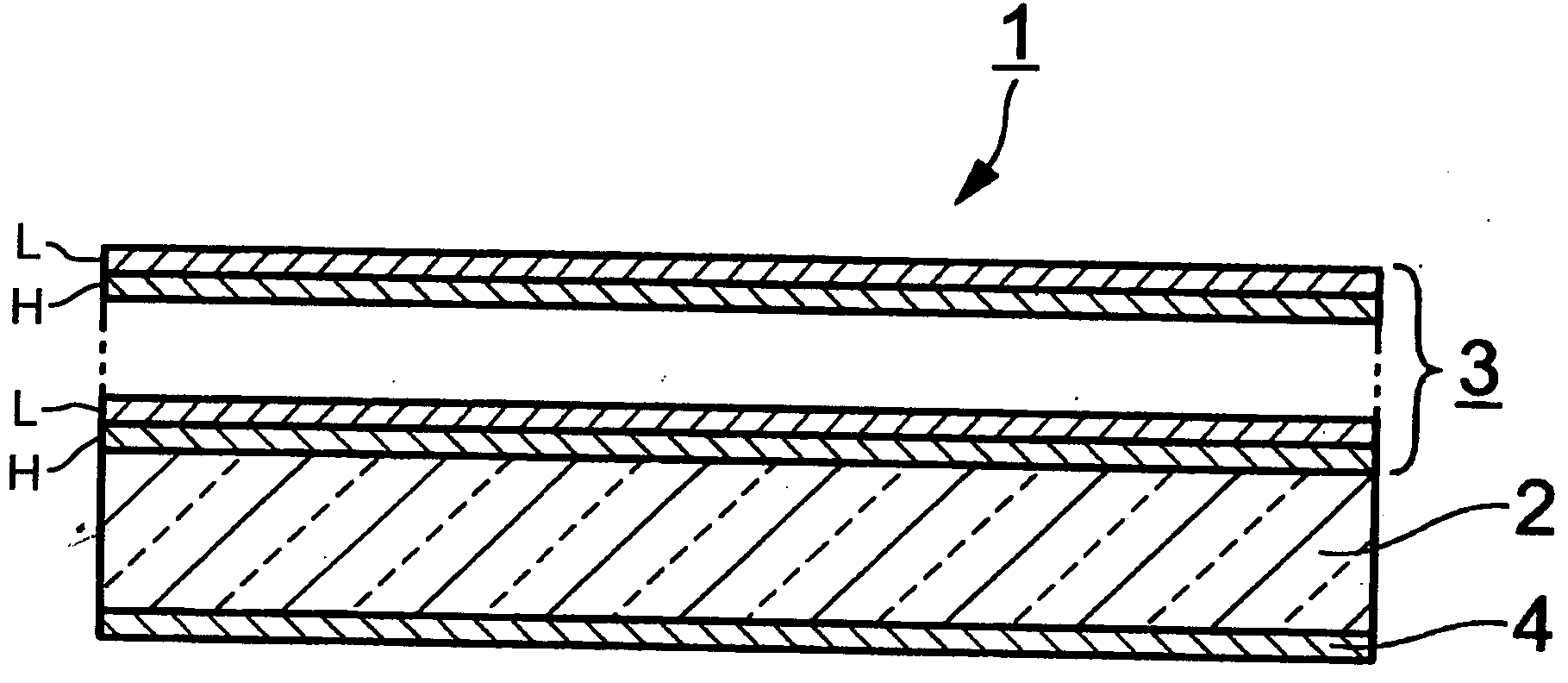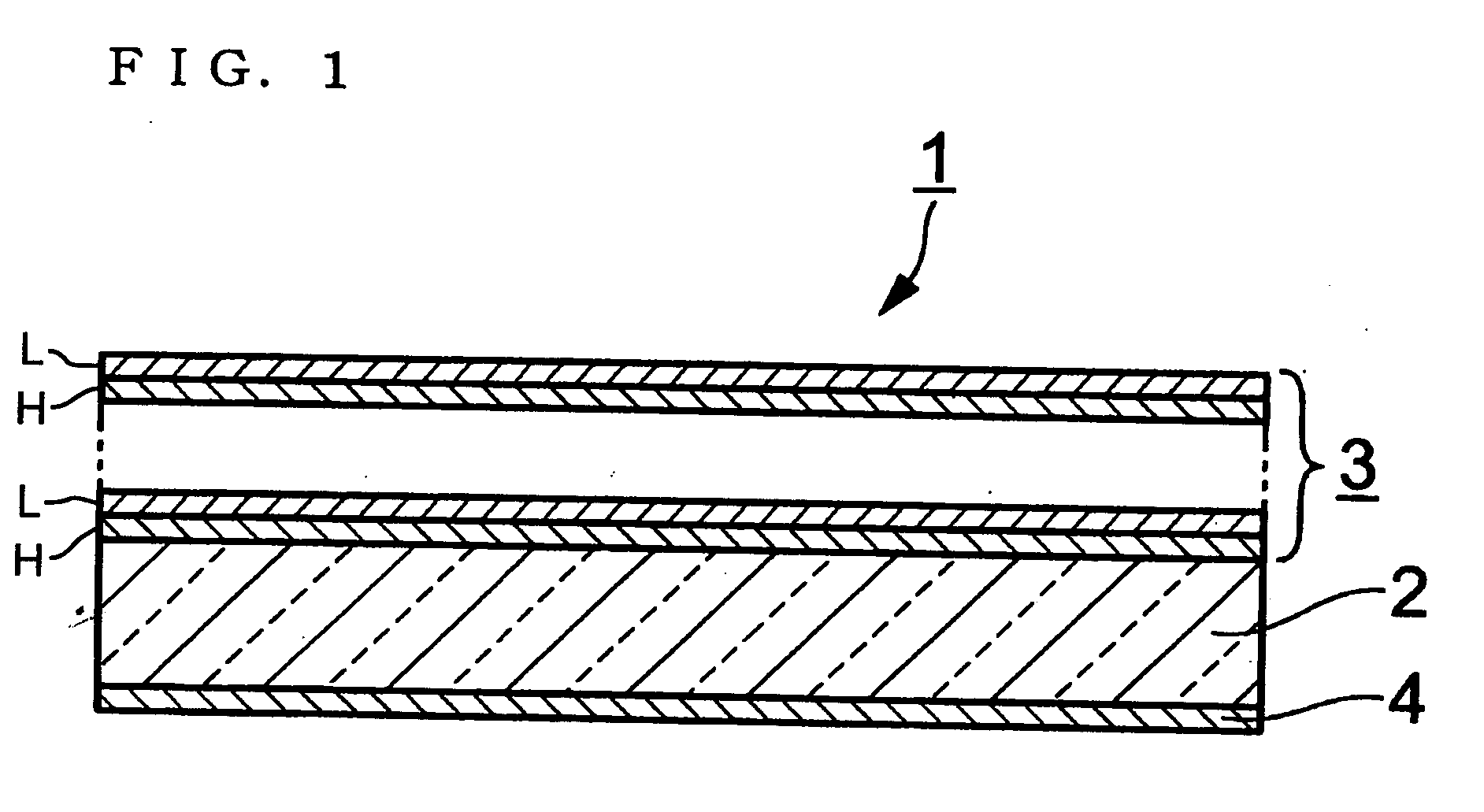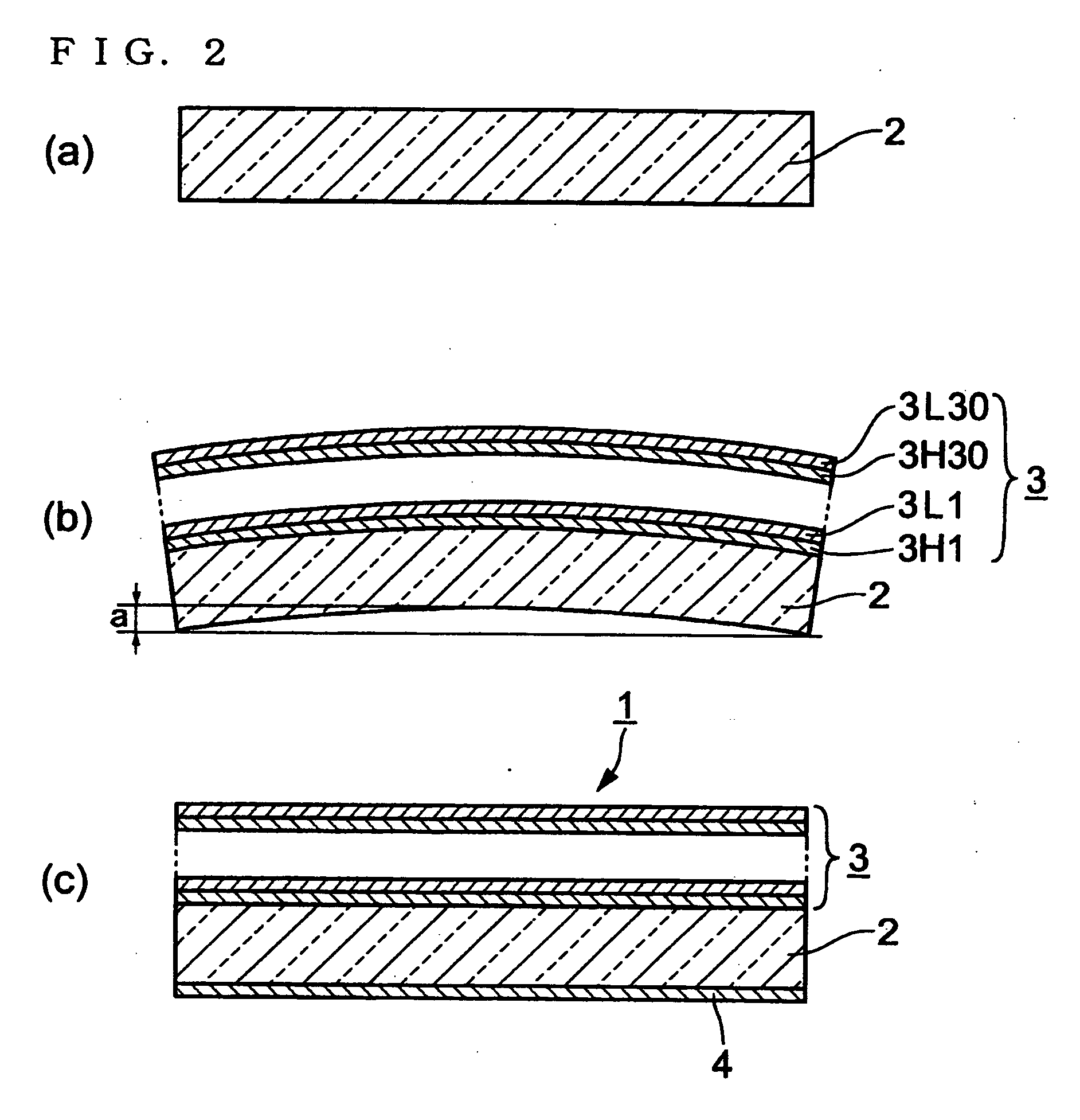Optical multilayer-film filter, method for fabricating optical multilayer-film filter, optical low-pass filter, and electronic apparatus
- Summary
- Abstract
- Description
- Claims
- Application Information
AI Technical Summary
Benefits of technology
Problems solved by technology
Method used
Image
Examples
first embodiment
A first exemplary embodiment of the invention is taught in relation to the application of the concepts of the invention in an optical multilayer-film filter (UV-IR cut filter) which allows light in the visible wavelength region to be transmitted therethrough, and which has an excellent reflecting characteristic of absorbing very little light having wavelengths between the UV and IR wavelength regions. That is to say, very little light not longer than a predetermined wavelength, in the ultraviolet wavelength region, and light having wavelengths not shorter than a predetermined wavelength, in the infrared wavelength region, is absorbed.
The discussion will now involve FIG. 1, which is a schematic sectional view of the structure of an optical multilayer-film filter according to an embodiment of the present invention, and FIG. 2, which illustrates a method for fabricating the optical multilayer film filter.
As shown in FIG. 1, an optical multilayer-film filter 1 has a substrate 2 all...
second embodiment
The second embodiment is different, from the first embodiment only in that the substrate is composed of quartz crystal.
The substrate allowing light to be transmitted therethrough is composed of a piece of quartz crystal (transmittance: n=1.52) having a two-dimensional size of 48 mm×43 mm and a thickness of 0.43 mm. The second embodiment is one embodiment applied to a UV-IR cut filter while being arranged such that the conditions thereof other than the material of the substrate are generally the same as those in the first embodiment.
The quartz crystal substrate having the dielectric multilayer film 3 formed thereon tends to be upwardly warped due to the strong compressive stresses of the low-refractive-index material layers (composed, e.g., of SiO2) and the weak tensile stresses of the high-refractive-index material layers (composed, e.g., of TiO2). The dielectric multilayer film 3 thus tends to have a surface with an upwardly protruding shape.
Next, with the dielectric multilaye...
third embodiment
The third embodiment is one embodiment applied to an optical multilayer-film filter (IR cut filter) which allows light in the visible wavelength region to be transmitted therethrough and has an excellent reflecting characteristic of absorbing little light in the infrared wavelength region, having wavelengths not shorter than a predetermined wavelength.
The third embodiment is different from the first embodiment only in the number of film layers and the film thickness structure of the dielectric multilayer film 3 formed on the upper surface of the glass substrate 2 and the film thickness structure of the dielectric monolayer film 4 formed on the lower surface of the glass substrate 2.
A method for forming films on the glass substrate in the third embodiment will be described below. With respect to the formation of the dielectric multilayer film 3 on the glass substrate 2, each high-refractive-index material layer (H) is composed of TiO2 and each low-refractive-index material layer (...
PUM
 Login to View More
Login to View More Abstract
Description
Claims
Application Information
 Login to View More
Login to View More - R&D
- Intellectual Property
- Life Sciences
- Materials
- Tech Scout
- Unparalleled Data Quality
- Higher Quality Content
- 60% Fewer Hallucinations
Browse by: Latest US Patents, China's latest patents, Technical Efficacy Thesaurus, Application Domain, Technology Topic, Popular Technical Reports.
© 2025 PatSnap. All rights reserved.Legal|Privacy policy|Modern Slavery Act Transparency Statement|Sitemap|About US| Contact US: help@patsnap.com



